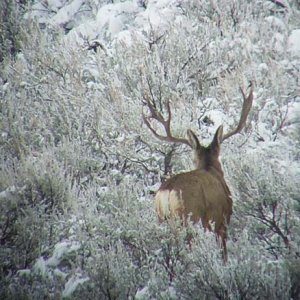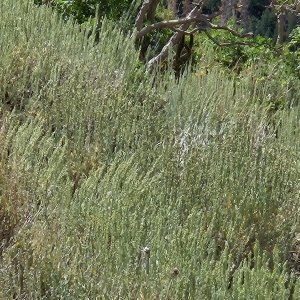202typical
Long Time Member
- Messages
- 3,123
As a farmer is this situation effecting you?
I was out in the back yard last week and there are a couple of wild persimmon trees that bloom about this time of year and are typically loaded with bees doing their work. In fact the sound is defening there are so many. But I noticed right off how few bees there were this year. I thought to my self must be a latter bloom this year and left it at that. Then I saw this and thought I'd see what you thought.
Mysterious disappearance of US bees creating a buzz by Jean-Louis Santini
Fri Apr 6, 10:54 PM ET
WASHINGTON (AFP) - US beekeepers have been stung in recent months by the mysterious disappearance of millions of bees threatening honey supplies as well as crops which depend on the insects for pollination.
Bee numbers on parts of the east coast and in Texas have fallen by more than 70 percent, while California has seen colonies drop by 30 to 60 percent.
According to estimates from the US Department of Agriculture, bees are vanishing across a total of 22 states, and for the time being no one really knows why.
"Approximately 40 percent of my 2,000 colonies are currently dead and this is the greatest winter colony mortality I have ever experienced in my 30 years of beekeeping," apiarist Gene Brandi, from the California State Beekeepers Association, told Congress recently.
It is normal for hives to see populations fall by some 20 percent during the winter, but the sharp loss of bees is causing concern, especially as domestic US bee colonies have been steadily decreasing since 1980.
There are some 2.4 million professional hives in the country, according to the Agriculture Department, 25 percent fewer than at the start of the 1980s.
And the number of beekeepers has halved.
The situation is so bad, that beekeepers are now calling for some kind of government intervention, warning the flight of the bees could be catastrophic for crop growers.
Domestic bees are essential for pollinating some 90 varieties of vegetables and fruits, such as apples, avocados, and blueberries and cherries.
"The pollination work of honey bees increases the yield and quality of United States crops by approximately 15 billion dollars annually including six billion in California," Brandi said.
California's almond industry alone contributes two billion dollars to the local economy, and depends on 1.4 million bees which are brought from around the US every year to help pollinate the trees, he added.
The phenomenon now being witnessed across the United States has been dubbed "colony collapse disorder," or CCD, by scientists as they seek to explain what is causing the bees to literally disappear in droves.
The usual suspects to which bees are known to be vulnerable such as the varroa mite, an external parasite which attacks honey bees and which can wipe out a hive, appear not to be the main cause.
"CCD is associated with unique symptoms, not seen in normal collapses associated with varroa mites and honey bee viruses or in colony deaths due to winter kill," entomologist Diana Cox-Foster told the Congress committee.
In cases of colony collapse disorder, flourishing hives are suddenly depopulated leaving few, if any, surviving bees behind.
The queen bee, which is the only one in the hive allowed to reproduce, is found with just a handful of young worker bees and a reserve of food.
Curiously though no dead bees are found either inside or outside the hive.
The fact that other bees or parasites seem to shun the emptied hives raises suspicions that some kind of toxin or chemical is keeping the insects away, Cox-Foster said.
Those bees found in such devastated colonies also all seem to be infected with multiple micro-organisms, many of which are known to be behind stress-related illness in bees.
Scientists working to unravel the mysteries behind CCD believe a new pathogen may be the cause, or a new kind of chemical product which could be weakening the insects' immune systems.
The finger of suspicion is being pointed at agriculture pesticides such as the widely-used neonicotinoides, which are already known to be poisonous to bees.
France saw a huge fall in its bee population in the 1990s, blamed on the insecticide Gaucho which has now been banned in the country.
I was out in the back yard last week and there are a couple of wild persimmon trees that bloom about this time of year and are typically loaded with bees doing their work. In fact the sound is defening there are so many. But I noticed right off how few bees there were this year. I thought to my self must be a latter bloom this year and left it at that. Then I saw this and thought I'd see what you thought.
Mysterious disappearance of US bees creating a buzz by Jean-Louis Santini
Fri Apr 6, 10:54 PM ET
WASHINGTON (AFP) - US beekeepers have been stung in recent months by the mysterious disappearance of millions of bees threatening honey supplies as well as crops which depend on the insects for pollination.
Bee numbers on parts of the east coast and in Texas have fallen by more than 70 percent, while California has seen colonies drop by 30 to 60 percent.
According to estimates from the US Department of Agriculture, bees are vanishing across a total of 22 states, and for the time being no one really knows why.
"Approximately 40 percent of my 2,000 colonies are currently dead and this is the greatest winter colony mortality I have ever experienced in my 30 years of beekeeping," apiarist Gene Brandi, from the California State Beekeepers Association, told Congress recently.
It is normal for hives to see populations fall by some 20 percent during the winter, but the sharp loss of bees is causing concern, especially as domestic US bee colonies have been steadily decreasing since 1980.
There are some 2.4 million professional hives in the country, according to the Agriculture Department, 25 percent fewer than at the start of the 1980s.
And the number of beekeepers has halved.
The situation is so bad, that beekeepers are now calling for some kind of government intervention, warning the flight of the bees could be catastrophic for crop growers.
Domestic bees are essential for pollinating some 90 varieties of vegetables and fruits, such as apples, avocados, and blueberries and cherries.
"The pollination work of honey bees increases the yield and quality of United States crops by approximately 15 billion dollars annually including six billion in California," Brandi said.
California's almond industry alone contributes two billion dollars to the local economy, and depends on 1.4 million bees which are brought from around the US every year to help pollinate the trees, he added.
The phenomenon now being witnessed across the United States has been dubbed "colony collapse disorder," or CCD, by scientists as they seek to explain what is causing the bees to literally disappear in droves.
The usual suspects to which bees are known to be vulnerable such as the varroa mite, an external parasite which attacks honey bees and which can wipe out a hive, appear not to be the main cause.
"CCD is associated with unique symptoms, not seen in normal collapses associated with varroa mites and honey bee viruses or in colony deaths due to winter kill," entomologist Diana Cox-Foster told the Congress committee.
In cases of colony collapse disorder, flourishing hives are suddenly depopulated leaving few, if any, surviving bees behind.
The queen bee, which is the only one in the hive allowed to reproduce, is found with just a handful of young worker bees and a reserve of food.
Curiously though no dead bees are found either inside or outside the hive.
The fact that other bees or parasites seem to shun the emptied hives raises suspicions that some kind of toxin or chemical is keeping the insects away, Cox-Foster said.
Those bees found in such devastated colonies also all seem to be infected with multiple micro-organisms, many of which are known to be behind stress-related illness in bees.
Scientists working to unravel the mysteries behind CCD believe a new pathogen may be the cause, or a new kind of chemical product which could be weakening the insects' immune systems.
The finger of suspicion is being pointed at agriculture pesticides such as the widely-used neonicotinoides, which are already known to be poisonous to bees.
France saw a huge fall in its bee population in the 1990s, blamed on the insecticide Gaucho which has now been banned in the country.














